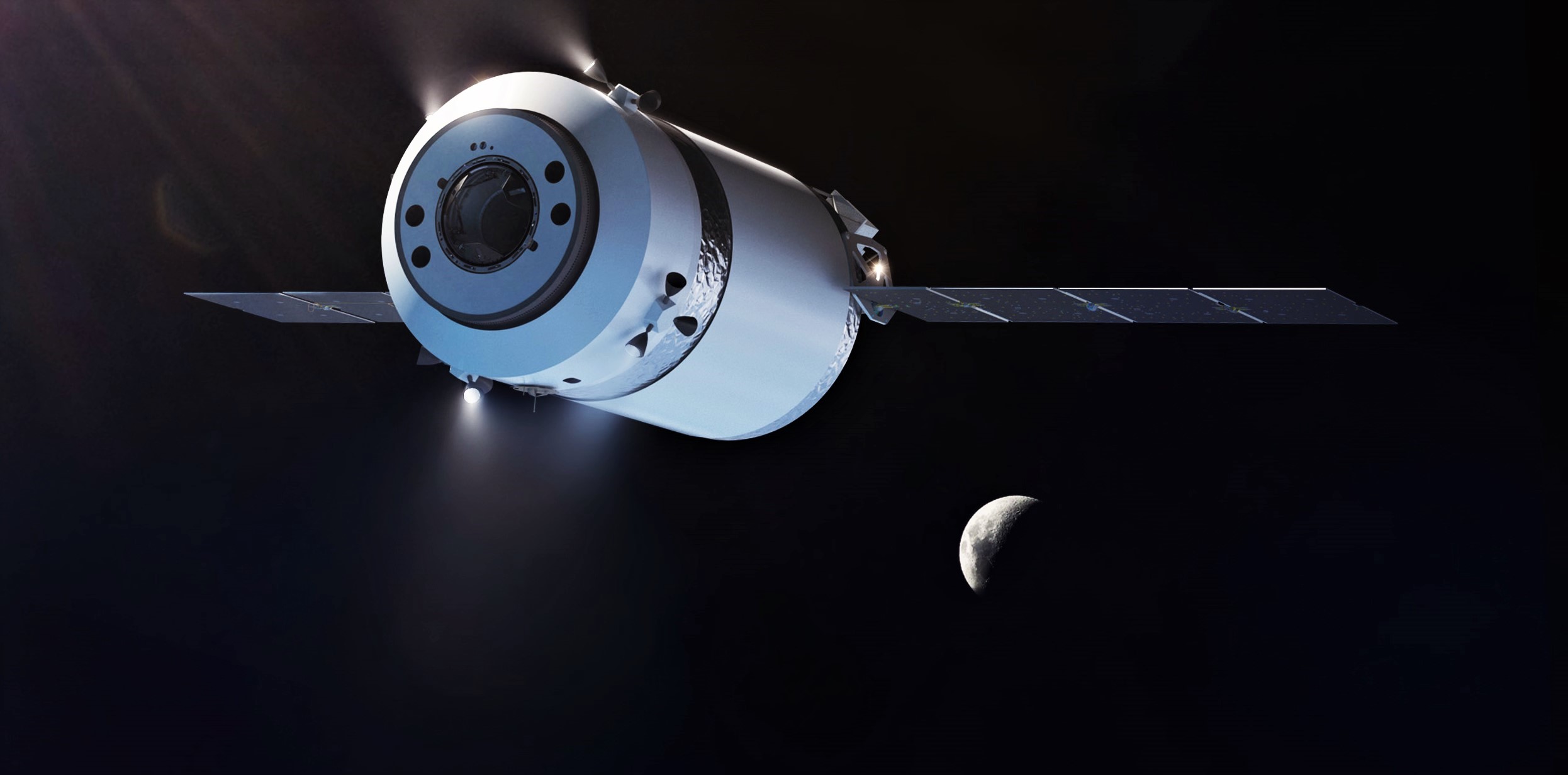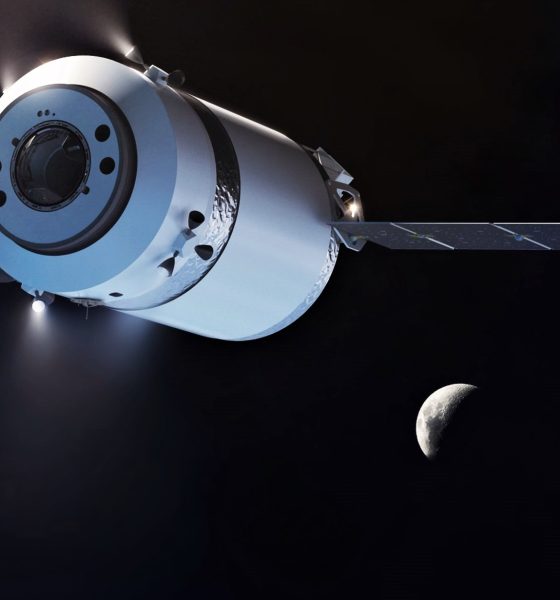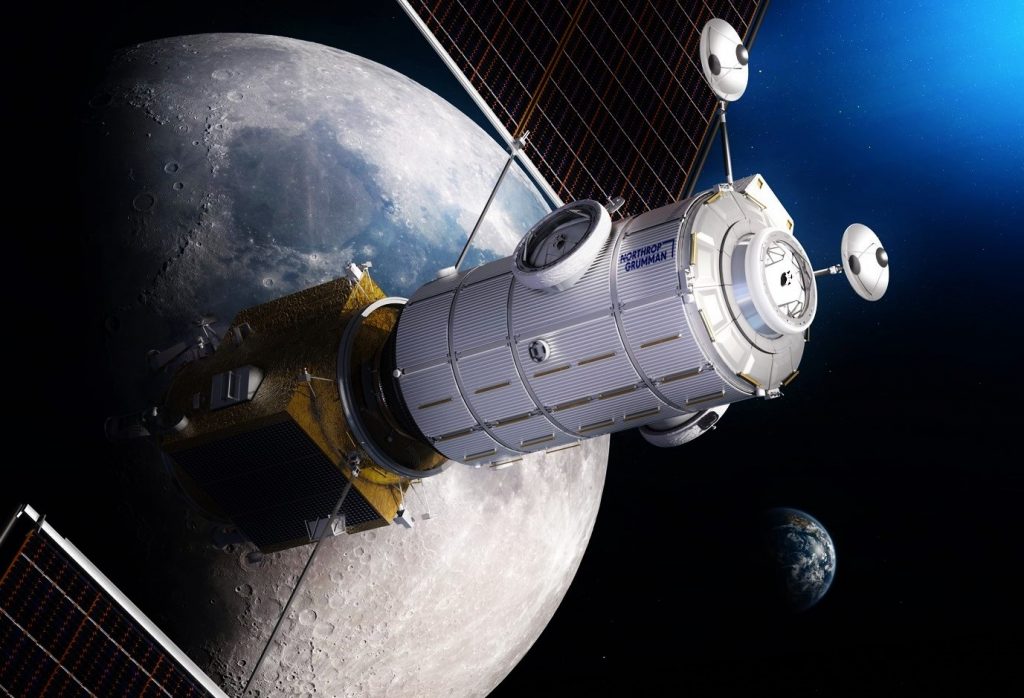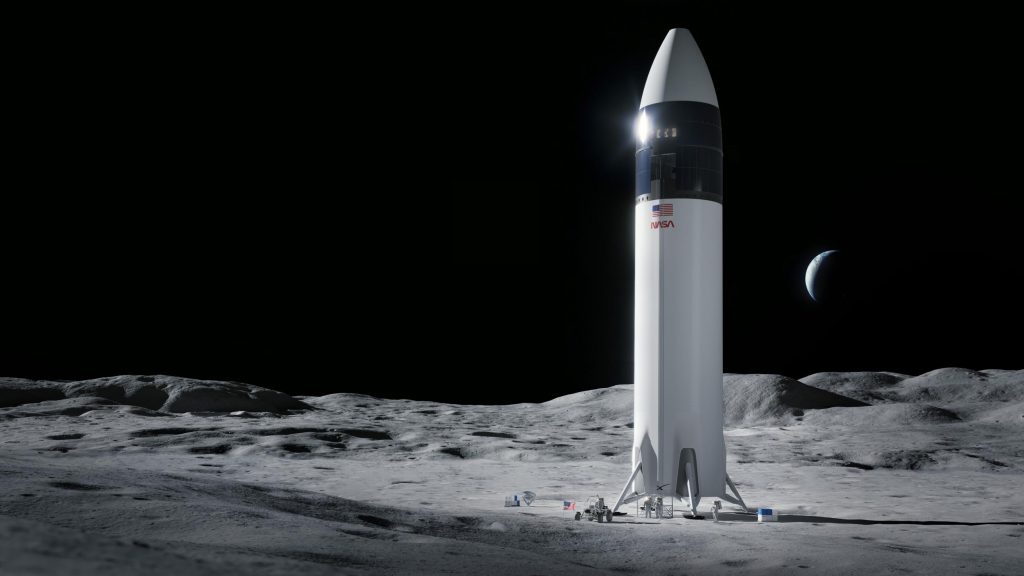

News
NASA asks SpaceX to decide the fate of ‘Dragon XL’ lunar cargo spacecraft
In a new Request For Information (RFI) quietly released by NASA on April Fools’ Day, the space agency appears to have indirectly asked SpaceX to determine the fate of its ‘Dragon XL’ lunar cargo spacecraft.
In March 2020, NASA announced that it had selected SpaceX to deliver the bulk of pressurized and unpressurized cargo it would need to crewed and operate a proposed “Gateway” lunar space station for the first several years of its existence. To accomplish that task, SpaceX would develop a heavily-modified single-use version of its Dragon 2 spacecraft with more propellant storage, more space for cargo, and a range of other design changes.
Known as Dragon XL, that spacecraft would weigh around 15 to 16 tons (~33,000-35,000 lb) at liftoff and likely require a fully or partially expendable Falcon Heavy launch for each mission to the Moon. At the time, it was a fairly balanced and reasonable choice on NASA’s part, leveraging existing investments and experience with SpaceX and Dragon and erecting no major technical hurdles. However, more than two years later, NASA still hasn’t started work on the contract.
That’s why the new April 1st RFI is so intriguing. NASA begins by referencing fine print in the original 2018 Gateway Logistics Services (GLS) Request For Proposals (RFP) that allows the agency to continue receiving and considering new proposals from new and existing providers throughout the program’s planned 17-year lifespan. The agency says its primary motivations are for “information and planning purposes, to request feedback, to promote competition,” and to “[determine] whether to conduct an on-ramp in 2022.” NASA doesn’t specify what exactly that means, but in the context of the rest of the text, it appears that the agency wants to use this RFI to help determine whether or not to finally “on-ramp” its existing Dragon XL contract with SpaceX.
However, the document gets far more interesting and suggestive. Later, NASA spells out what exactly it wants respondents to discuss. In a list of eight main questions, the agency repeatedly hints at a desire to substantially expand the scope of GLS. In question #8, NASA asks if, to help “create a vibrant supply chain in deep space,” respondents would be able to deliver additional cargo to “cislunar orbits [and] the lunar surface” or offer a “dedicated delivery tug capability” or “rapid response delivery service.”
NASA also asks for information on ways prospective GLS providers could “[minimize] the cost impact of…requirement changes,” “reduce operating costs,” and “minimize upfront costs.” In questions #2 and #3, NASA requests details about “new and/or innovative capabilities” that could “significantly increase…cargo delivery capacity” within “the next five years” and states that “offerors exceeding the minimum [cargo] capabilities may be viewed more favorably.”

NASA seems very interested in the potential benefits of alternative deep space cargo transport services that are both cheaper and more capable than Dragon XL. Between the lines, however, the RFI also reads as if it was written directly to SpaceX. The first question is perhaps the most telling: “Is your company interested in on-ramping to the GLS contract to provide Logistics Services as described in the original solicitation?”
SpaceX is the only company with an existing GLS contract that it could “on-ramp to” – a roundabout way to say “start work on”. In the following questions, NASA then repeatedly expresses interest in cargo transport capabilities well beyond the original contract’s requirements and asks about innovative new capabilities that could enable such improvements. NASA even “recognizes” and hints at a willingness to consider unorthodox solutions that, for example, might require “more than one launch” per cargo delivery or help “minimize upfront costs to the Government.” Put simply, while it does open the door for just about any US company to inform NASA about new GLS options, it’s hard not to conclude that this new RFI is at least partially designed to give SpaceX an opportunity to propose Dragon XL alternatives or upgrades.

The most obvious option: Starship. Through the Human Landing System (HLS) program, NASA has already committed to investing at least $3 billion to develop a crewed Starship Moon lander and the fully-reusable launch vehicle and refueling infrastructure required to launch and operate it. With barely any modification, the Starship architecture SpaceX and NASA are already developing could be used to deliver dozens of tons of pressurized cargo to cislunar space, lunar orbit, the Gateway, the lunar surface, or just about anywhere else NASA wants. Leveraging that significant investment would also tick almost every box in NASA’s new RFI by drastically reducing upfront and total development costs, helping to stimulate a “vibrant” deep space supply chain, and beating Dragon XL’s cargo capabilities by a factor of 5, 10, or even 20+.
Of course, there are technical challenges and reasons to believe that Starship can’t easily replace Dragon XL. Even Dragon XL risked running into Gateway’s visiting vehicle mass limit of just 14 tons. Starship would likely weigh at least 100-200 tons – more than the entire Gateway. Dragon XL would use non-cryogenic propellant and is baselined to spend at least 6-12 months at a time at the Gateway. NASA has also studied the possibility of using Dragon XL as a crew cabin or bathroom to temporarily relieve Gateway’s extremely cramped habitable volume. Starship’s main engines use cryogenic propellant that wants nothing more than to warm up and boil into gas, making it far harder to keep at the station for months at a time. Those problems are likely solvable, but it’s still worth noting that Starship is not a perfect fit right out of the box.
The RFI could also end with a whimper if SpaceX simply tells NASA that it’s happy to proceed with Dragon XL as proposed. Only time will tell. NASA is planning to hold an industry day on April 20th to better explain the RFI’s goals and wants responses by May 31st, 2022, after which the agency will decide whether or not to follow up with a solicitation or on-ramp Dragon XL.

Elon Musk
Elon Musk and Tesla AI Director share insights after empty driver seat Robotaxi rides
The executives’ unoccupied tests hint at the rapid progress of Tesla’s unsupervised Robotaxi efforts.

Tesla CEO Elon Musk and AI Director Ashok Elluswamy celebrated Christmas Eve by sharing personal experiences with Robotaxi vehicles that had no safety monitor or occupant in the driver’s seat. Musk described the system’s “perfect driving” around Austin, while Elluswamy posted video from the back seat, calling it “an amazing experience.”
The executives’ unoccupied tests hint at the rapid progress of Tesla’s unsupervised Robotaxi efforts.
Elon and Ashok’s firsthand Robotaxi insights
Prior to Musk and the Tesla AI Director’s posts, sightings of unmanned Teslas navigating public roads were widely shared on social media. One such vehicle was spotted in Austin, Texas, which Elon Musk acknowleged by stating that “Testing is underway with no occupants in the car.”
Based on his Christmas Eve post, Musk seemed to have tested an unmanned Tesla himself. “A Tesla with no safety monitor in the car and me sitting in the passenger seat took me all around Austin on Sunday with perfect driving,” Musk wrote in his post.
Elluswamy responded with a 2-minute video showing himself in the rear of an unmanned Tesla. The video featured the vehicle’s empty front seats, as well as its smooth handling through real-world traffic. He captioned his video with the words, “It’s an amazing experience!”
Towards Unsupervised operations
During an xAI Hackathon earlier this month, Elon Musk mentioned that Tesla owed be removing Safety Monitors from its Robotaxis in Austin in just three weeks. “Unsupervised is pretty much solved at this point. So there will be Tesla Robotaxis operating in Austin with no one in them. Not even anyone in the passenger seat in about three weeks,” he said. Musk echoed similar estimates at the 2025 Annual Shareholder Meeting and the Q3 2025 earnings call.
Considering the insights that were posted Musk and Elluswamy, it does appear that Tesla is working hard towards operating its Robotaxis with no safety monitors. This is quite impressive considering that the service was launched just earlier this year.
Elon Musk
Starlink passes 9 million active customers just weeks after hitting 8 million
The milestone highlights the accelerating growth of Starlink, which has now been adding over 20,000 new users per day.

SpaceX’s Starlink satellite internet service has continued its rapid global expansion, surpassing 9 million active customers just weeks after crossing the 8 million mark.
The milestone highlights the accelerating growth of Starlink, which has now been adding over 20,000 new users per day.
9 million customers
In a post on X, SpaceX stated that Starlink now serves over 9 million active users across 155 countries, territories, and markets. The company reached 8 million customers in early November, meaning it added roughly 1 million subscribers in under seven weeks, or about 21,275 new users on average per day.
“Starlink is connecting more than 9M active customers with high-speed internet across 155 countries, territories, and many other markets,” Starlink wrote in a post on its official X account. SpaceX President Gwynne Shotwell also celebrated the milestone on X. “A huge thank you to all of our customers and congrats to the Starlink team for such an incredible product,” she wrote.
That growth rate reflects both rising demand for broadband in underserved regions and Starlink’s expanding satellite constellation, which now includes more than 9,000 low-Earth-orbit satellites designed to deliver high-speed, low-latency internet worldwide.
Starlink’s momentum
Starlink’s momentum has been building up. SpaceX reported 4.6 million Starlink customers in December 2024, followed by 7 million by August 2025, and 8 million customers in November. Independent data also suggests Starlink usage is rising sharply, with Cloudflare reporting that global web traffic from Starlink users more than doubled in 2025, as noted in an Insider report.
Starlink’s momentum is increasingly tied to SpaceX’s broader financial outlook. Elon Musk has said the satellite network is “by far” the company’s largest revenue driver, and reports suggest SpaceX may be positioning itself for an initial public offering as soon as next year, with valuations estimated as high as $1.5 trillion. Musk has also suggested in the past that Starlink could have its own IPO in the future.
News
NVIDIA Director of Robotics: Tesla FSD v14 is the first AI to pass the “Physical Turing Test”
After testing FSD v14, Fan stated that his experience with FSD felt magical at first, but it soon started to feel like a routine.

NVIDIA Director of Robotics Jim Fan has praised Tesla’s Full Self-Driving (Supervised) v14 as the first AI to pass what he described as a “Physical Turing Test.”
After testing FSD v14, Fan stated that his experience with FSD felt magical at first, but it soon started to feel like a routine. And just like smartphones today, removing it now would “actively hurt.”
Jim Fan’s hands-on FSD v14 impressions
Fan, a leading researcher in embodied AI who is currently solving Physical AI at NVIDIA and spearheading the company’s Project GR00T initiative, noted that he actually was late to the Tesla game. He was, however, one of the first to try out FSD v14.
“I was very late to own a Tesla but among the earliest to try out FSD v14. It’s perhaps the first time I experience an AI that passes the Physical Turing Test: after a long day at work, you press a button, lay back, and couldn’t tell if a neural net or a human drove you home,” Fan wrote in a post on X.
Fan added: “Despite knowing exactly how robot learning works, I still find it magical watching the steering wheel turn by itself. First it feels surreal, next it becomes routine. Then, like the smartphone, taking it away actively hurts. This is how humanity gets rewired and glued to god-like technologies.”
The Physical Turing Test
The original Turing Test was conceived by Alan Turing in 1950, and it was aimed at determining if a machine could exhibit behavior that is equivalent to or indistinguishable from a human. By focusing on text-based conversations, the original Turing Test set a high bar for natural language processing and machine learning.
This test has been passed by today’s large language models. However, the capability to converse in a humanlike manner is a completely different challenge from performing real-world problem-solving or physical interactions. Thus, Fan introduced the Physical Turing Test, which challenges AI systems to demonstrate intelligence through physical actions.
Based on Fan’s comments, Tesla has demonstrated these intelligent physical actions with FSD v14. Elon Musk agreed with the NVIDIA executive, stating in a post on X that with FSD v14, “you can sense the sentience maturing.” Musk also praised Tesla AI, calling it the best “real-world AI” today.








